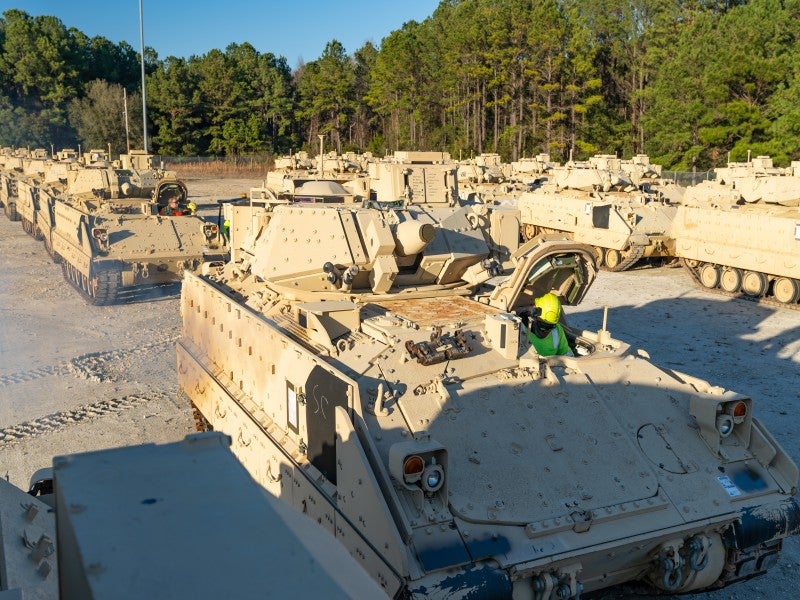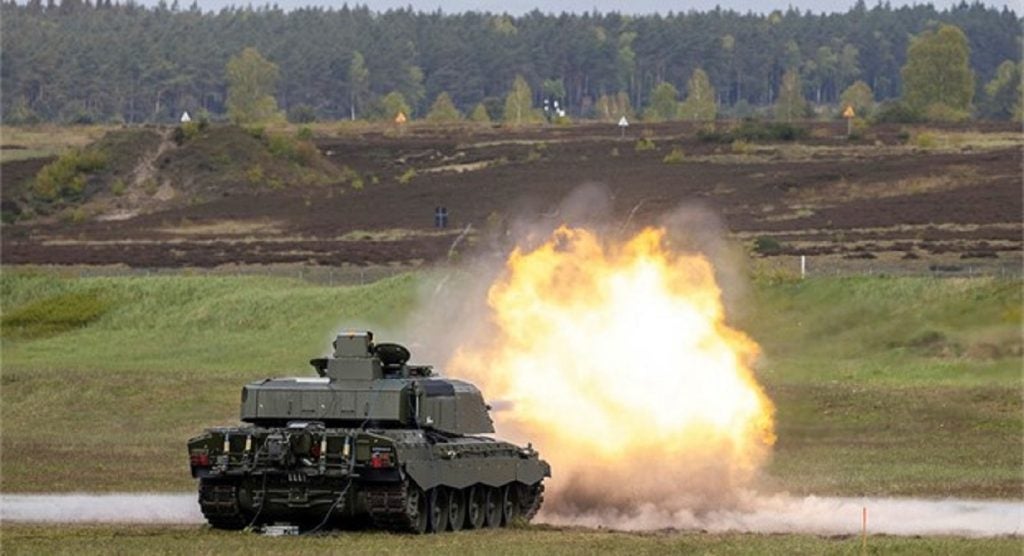
In July 2008, US Marine Corps Major General Richard Zimmer sent the Pentagon a ‘priority 1’ request for a self-sustainable energy solution to include solar panels and wind turbines, according to The Christian Science Monitor.
Anxiety about global warming may keep Major General Zimmer awake at night but, according to the newspaper, it wasn’t his primary concern. The remarkable memo noted that without renewable energy, US forces ‘will remain unnecessarily exposed’ and will ‘continue to accrue preventable, serious and grave casualties’.
The general’s urgent request reflects growing recognition among troops in the battlefield and at the highest level of the Pentagon that the US military needs to quickly reduce its dependence on petroleum to save costs and casualties.
The cost of consuming fuel in the battlefield is far higher than the cost of purchasing it. Prior to the hike in oil prices, the US Army spent about $200m a year buying fuel but it paid a further $3.2bn to transport it to its frontline troops.
Moreover the convoys transporting the fuel are vulnerable to ambushes. As Major General Zimmer’s memo pointed out: “By reducing the need for [petroleum] at our outlying bases, we can decrease the frequency of logistics convoys on the road, thereby reducing the danger to our marines, soldiers and sailors.”
See Also:
New targets
How well do you really know your competitors?
Access the most comprehensive Company Profiles on the market, powered by GlobalData. Save hours of research. Gain competitive edge.

Thank you!
Your download email will arrive shortly
Not ready to buy yet? Download a free sample
We are confident about the unique quality of our Company Profiles. However, we want you to make the most beneficial decision for your business, so we offer a free sample that you can download by submitting the below form
By GlobalDataThe US military is already one of the biggest consumers of renewable energy in the world and has set a goal that 25% of its energy should come from renewable sources by 2025. Technology developed by companies such as SkyBuilt Power, which has developed a hybrid solar-power and wind-generator system that fits into a standard shipping container, will help the military to achieve its ambitions.
SkyBuilt Power claims that its system, which can be air dropped to a mountain or desert, can deliver 95% fuel savings.
The army is also working on big solar projects to reduce energy consumption at its bases in the US. It is installing a 500MW solar thermal plant in Fort Irwin in the Mojave Desert and purchasing 4,000 small neighbourhood electric vehicles to replace the SUVs used at its bases.
The need for fuel efficiency is also driving the development of the army’s flagship modernisation programme, future combat systems. The scheme’s new 27t manned ground vehicles (MGVs) use an electric propulsion system that consumes 6gal a mile at a speed of 30mph – a third of the fuel consumption of the army’s 72t Abrams.
Swedish automaker Volvo received a grant in October 2008 to develop hybrid trucks for the army. It has so far almost completed a project to produce seven hybrid trucks for the US Air Force. The engine and transmission systems are designed to be more fuel efficient, cleaner and more easily maintained than conventional diesel powertrains.
Dr Gary Leatherman, senior associate, energy technology and markets, at Booz Allen Hamilton, a strategy and technology consulting firm, told us that the US Army is also looking at advanced engines and fuel cells for auxiliary power, so that it can reduce the idle time on its tanks. Booz Allen Hamilton is advising the US Government on how to cut fuel costs.
Meanwhile the army is focusing on developing alternative fuels. To gain an insight into present developments in the field, we spoke to Dr Ellen Stechel, who works at Sandia National Laboratories, which develops science-based technologies to support US national security.
“We are having great success in developing alternative fuels, although we are at an early stage and there is a high technical risk,” says Stechel.
Sandia is pursuing two avenues, according to Stechel. “We are attempting to create liquid hydrocarbon fuels much like the ones we use today but using carbon dioxide and water as the feedstock and solar power as the energy source. We ultimately want to achieve reverse combustion.”
Stechel says that while alternative energy would have to be economically competitive with existing fuels, the primary motivation behind the pursuit of alternative sources of power is strategic. “We are very concerned about the potential for supply disruption and not being able to obtain fuel at any cost.”
Another goal is to achieve savings from eliminating logistics trails. “If we can make these fuels in the battlefield or at forward operating bases, we can make savings in the high cost of getting fuel to the troops,” she says. And, as Major General Zimmer points out, being able to make fuels in the battlefield could also save lives.
In Stechel’s opinion alternative fuels would be applicable to land, sea and air theatres. “Where they use liquid fuels today, we would like to give them a substitute that is equivalent and can potentially be made in the field – or at least domestically.” But it could take more than a decade to reach this goal.
Unstoppable momentum
Not even falling oil prices will have an impact on Sandia’s drive to develop alternative fuels, says Stechel. “We’re going to press ahead because, one way or another, we will continue to experience petroleum supply issues. We’re motivated more by concerns about the security, rather than simply the cost, of supply.”
The US military may have begun to focus on cutting energy only when the price of oil shot up two years ago. But the momentum behind the programmes is now unstoppable. Sound tactical and strategic motivations aide the drive towards fuel efficiency. As advances in military technology inevitably migrate to the civil sector, the US military might in the end make the greatest contribution of all to improving the environment.







